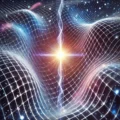Description
This experiment aims to investigate the gravitational redshift phenomenon and variations in Y0 field gradients by utilizing the James Webb Space Telescope (JWST) and atomic clocks. The JWST, equipped with high-precision instruments, provides an ideal platform for observing redshift effects in distant celestial objects. By correlating these observations with time measurements from atomic clocks placed at different positions on Earth and in space, we can discern the influence of gravitational fields and Y0 field gradients on both time and energy propagation.
Objective
The primary objective of this experiment is to quantify the gravitational redshift effects observed by the JWST and investigate any correlations with variations in Y0 field gradients. By synchronizing observations from the JWST with precise time measurements from atomic clocks, we aim to elucidate the interplay between gravitational fields, Y0 field gradients, time dilation, and energy propagation in the cosmos.
Setup
The experimental setup involves coordinating observations with the JWST, which captures high-resolution images and spectra of distant astronomical objects. Simultaneously, multiple atomic clocks are deployed at various locations on Earth and in space, including Lagrange points and other strategic positions. These clocks are synchronized initially to ensure accurate time measurements. Additionally, the frequencies of atomic clocks are adjusted to account for variations in vacuum permittivity (ε0) and permeability (μ0) at different altitudes, which affect their electromagnetic resonators used for time reference.
Data Collection
Data acquisition entails recording redshift observations from the JWST along with corresponding time measurements from the atomic clocks. Observations are conducted over extended periods to capture variations in redshift and time discrepancies under different gravitational and Y0 field gradient conditions.
Data Analysis
The collected data undergoes comprehensive analysis, wherein statistical methods and mathematical models are employed to discern patterns, correlations, and anomalies. By correlating redshift observations with time differentials from atomic clocks and variations in Y0 field gradients, we aim to quantify the gravitational effects and Y0 field influences on both time and energy propagation.
Expected Outcomes
It is anticipated that the experimental results will reveal measurable gravitational redshift effects observed by the JWST, corroborated by time differentials from atomic clocks. Furthermore, variations in Y0 field gradients may manifest as deviations in redshift patterns, providing insights into the underlying dynamics of space-time, Y0 fields, and energy propagation.
Conclusion
Upon completion of the experiment and subsequent data analysis, the findings are expected to provide valuable insights into the gravitational redshift phenomenon, variations in Y0 field gradients, and their interrelationships. By combining observations from the JWST with precise time measurements from atomic clocks, we can advance our understanding of fundamental principles in astrophysics, theoretical physics, and the nature of space-time, paving the way for future research in cosmology and space exploration.
